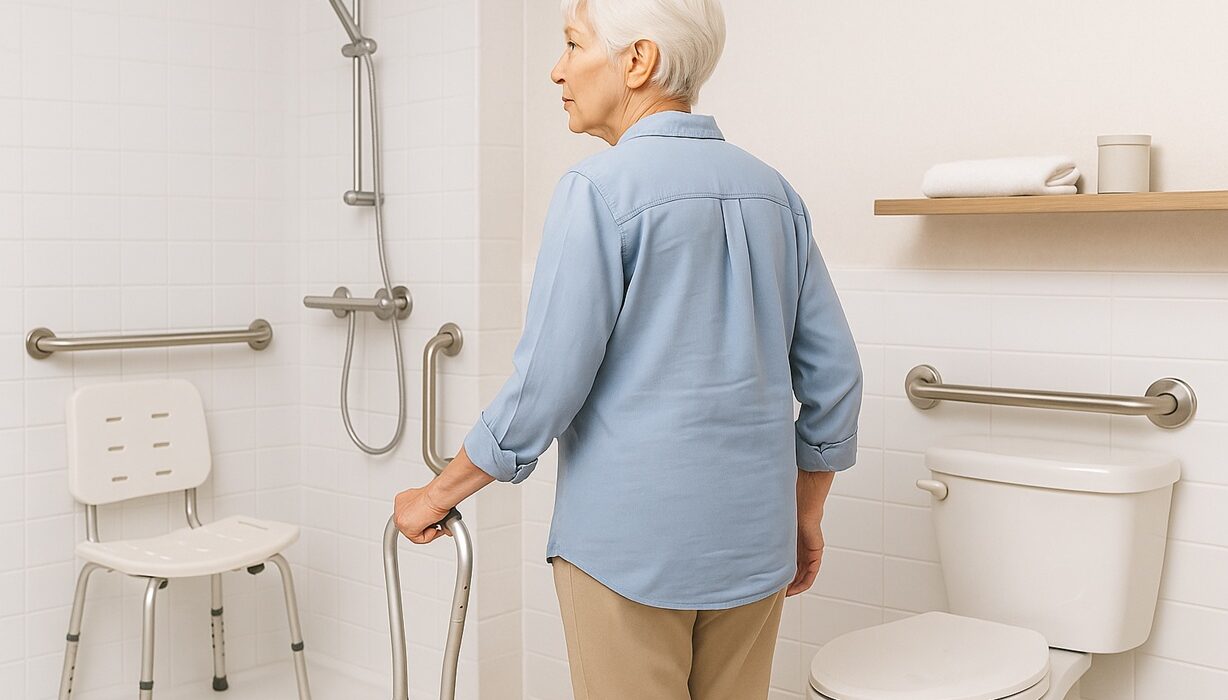Bathrooms are one of the most important spaces to make safe for the elderly. Slippery surfaces, low lighting, and awkward layouts can make everyday bathroom routines dangerous. Below are the key areas to focus on when designing an ergonomic and safe bathroom for the elderly.
Accessibility and layout
The first step is ensuring that the bathroom layout is open, easy to move through, and free from any hazards. Many elderly rely on mobility aids like walkers or wheelchairs, so doorways and pathways should be wide enough to accommodate them. Ensure that the shower, toilet, and basin are positioned for easy access without obstruction.
A walk-in shower is much safer than a bathtub. Also include seating inside the shower to make it more accessible.
Slip resistance and flooring choices
Slipping and falling are one of the biggest risks for seniors in the bathroom. Choose flooring with slip-resistance in mind. Textured tiles, slip-resistant vinyl, or rubber flooring provide better grip. Furthermore, use non-slip mats in front of the shower and sink. Make sure they are secured to avoid curling edges that could trip someone.
Supportive fixtures and ergonomic design
Installing supportive fixtures is essential for helping elderly users maintain their balance. Grab bars near the toilet and inside the shower provide reassurance and stability. These should be securely installed at the right height, and preferably in contrasting colors so they’re easy to see.
Ergonomic design also plays a big role in comfort. Raised-height toilets reduce the strain of sitting and standing, while lever-style taps are far easier to operate for those with arthritis. Position shelving and storage at a reachable height to avoid unnecessary bending or stretching.
Lighting and visibility
Good lighting can transform a risky bathroom space into a safe one. Natural light is ideal, but for bathrooms without windows, install bright, evenly distributed artificial lighting. Avoid harsh glare by choosing warm, diffused light sources that reduce shadows. Motion-sensor lighting can be especially useful for nighttime visits, ensuring that the path to the bathroom is well-lit without fumbling for switches.
Comfort and independence
Beyond safety, bathrooms should feel welcoming and empowering. Simple touches like heated towel racks, anti-fog mirrors, and easy-to-clean surfaces reduce effort and improve comfort – all which can make the life of an elderly person so much easier.
Above all, design choices should support independence. A well-thought-out bathroom allows elderly individuals to carry out personal care with minimal assistance, boosting both confidence and quality of life.
Summary
Designing an ergonomic and safe bathroom for the elderly requires careful planning, but the outcome is worth it. By focusing on accessibility, slip resistance, supportive fixtures, lighting, and overall comfort, you can create safe bathroom environment to suit the needs of the elderly.
Looking to build home with the elderly in mind, adding a space for your parents or grandparents? Let IQ Construction help design and build the perfect home for your family! Contact us today!
